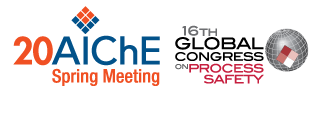

Amine-based absorption systems offer a proven, reliable and cost-effective method to capture CO2 from the different SMR gas streams. While the SMR syngas (outlet of shift reactor after heat recovery), characterized by a high CO2 partial pressure, presents the opportunity to capture CO2 at the lowest unit cost ($/tCO2), post-combustion (furnace exhaust) capture maximizes the amount of CO2 captured. Both have been proven at large scale; in particular capture from the high-pressure syngas has been successfully applied at the Scotford refinery (Alberta), where the Quest project, using the ADIP-X technology, has already captured and sequestered more than four million tons of CO2 and generated valuable learnings for replication in future SMR CCUS projects.
The presentation will discuss the relative merits and costs of both options, and in particular how integration with an industrial gas SMR located at USGC site can help provide the energy required for absorbent regeneration, which is around 2 GJ/ton of CO2, and for 1,000 KTA CO2 capture unit results in a LPS steam requirement of approximately 110 tonne/hr.
